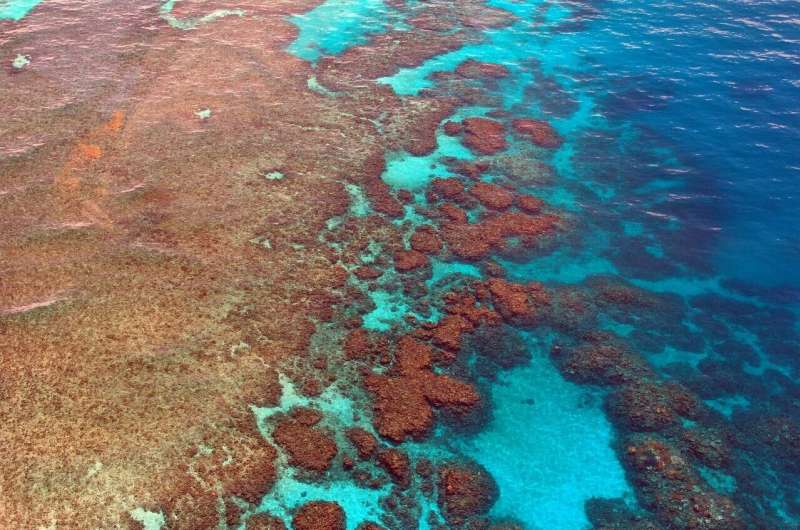Credit: CC0 Public Domain
In a ground-breaking new study, scientists used innovative molecular techniques to explain how corals on the east coast of Australia survived previous tough conditions—enabling the Great Barrier Reef to become the vast reef it is today.
"We sequenced the genomes of 150 individual colonies of the same species of corals and used this to find out which genes are important for survival in inshore reefs," said the study's lead author Dr. Ira Cooke from James Cook University.
"Genomes are like a time capsule containing an enormous wealth of historical information," said co-author Professor David Miller from the ARC Centre of Excellence for Coral Reef Studies (Coral CoE).
"Generally, single genomes are really useful in coral studies, but hundreds of genomes for the same species are a goldmine of information," Prof Miller said.
The team delved into the ancient history of reefs, back some one million years, to when inshore corals from Magnetic Island first diverged from their northern reef kin.
The scientists mapped the rise and fall of these two coral populations on the Great Barrier Reef, tracking which genes rapidly evolved to endure changing conditions, while measuring the flow of genes between locations.
They say the results are important for the current and future conservation of coral reefs.
Dr Ira Cooke talks about genomics and its importance in the Great Barrier Reef's past, present and future. Credit: ARC Centre of Excellence for Coral Reef Studies.
Dr. Cooke and his team already knew corals on the inshore Great Barrier Reef were able to flourish despite a disruptive environment of high turbidity and highly variable salinity and temperature parameters. By looking at the variation between genomes the team discovered exactly how the corals achieved this feat.
The survival strategies used by the reef's inshore corals include a set of genes that evolved rapidly during the past 10,000 years. This time period includes flooding after the last ice-age. Another strategy includes the assimilation of specialist strains of coral symbiotic algae. These were found in reefs with some of the toughest conditions—often close to rivers.
"These two strategies deserve special attention in future studies, as possible keys to the survival of corals under similar conditions," Dr. Cooke said.
"Losing these reefs is a future possibility as coral reefs currently experience unprecedented, drastic and rapid changes due to human influence," Prof Miller said.
"Coral reefs are threatened by climate change, over-fishing and pollution."
In addressing the latter, Dr. Cooke says it's highly important to care for water catchments and water quality.
"As high-quality genome assemblies are derived from a broader range of corals and their symbionts, this and related approaches will become key tools," the authors said.
"These bring us closer to understanding the interaction between past climate conditions and the evolution of corals and coral reefs."
More information: Ira Cooke et al, Genomic signatures in the coral holobiont reveal host adaptations driven by Holocene climate change and reef specific symbionts, Science Advances (2020). DOI: 10.1126/sciadv.abc6318
Journal information: Science Advances
Provided by ARC Centre of Excellence for Coral Reef Studies
























